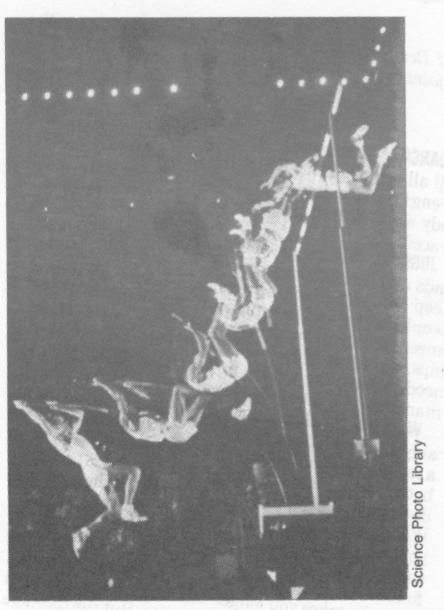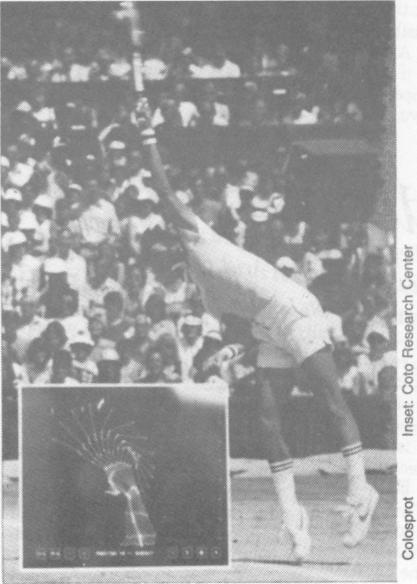| Index | Next |
![]()
The body is a machine like any other. Analyze its performance on a computer and startling things
happen
At the age of 43, former US Gold medallist Al Oerter decided to make a comeback. He had quit in 1968 after the Mexico Olympics, but 12 years later he threw the discus about 18 m further than his gold medal distance of 64.6 m. What is his secret? Biomechanical analysis. Oerter is one of many athletes whose techniques have been dramatically improved by this computer-aided science designed to optimize performance.
The mastermind behind Oerter's newfound success is Dr Gideon Ariel, director of research at Computerized Biomechanical Analysis Inc., at Amherst, Massachusetts, a professor at the University of Massachusetts and Chairman and Co-founder of the Coto Research Centre. Ariel, himself a former Israeli Olympic discus-thrower, is a
passionate exponent of biomechanics and already the hero of hundreds of athletes.
Biomechanics is the study of the structure and function of the body which replaces the medical with the mechanical model. Working on the principle that the same laws of physics apply to any system in motion, regardless of whether it is a living organism or a machine, Dr Ariel has devised a method of assessing an athlete's performance using computer graphics. The necessary program took 10,000 hours to write - but enable an analysis time that can be accommodated within the training periods of all types of athlete.
What happens is as follows: a camera shoots an athlete's motion from two or three different angles simultaneously, at speeds of up to 10,000 frame§ a second.
Above left A polevaulter caught in action using highspeed film. This technique allows detailed frame by frame analysis of each of the
athlete's movements which is the basis of the new science of biomechanics.
Jimmy Connors serves another ace (above). Inset The image's joints are plotted as x and y coordinates and keyed into the computer memory to produce 'stickfigures'. Connors' service shot can now be analyzed.
The high-speed images are then projected on to a screen over an array of 20,000 ultrasensitive microphones. The analyst uses a sonic pen microphone to trace the athlete's position in each photo frame. (The film can be frozen at any point.) A composite tracing of the centres of the performer's joints is translated into x and y coordinates. Then the coordinates of each joint and each position of the entire sequence are keyed into the computer's memory. The joint centres are then linked together with trace lines to make a green stick-like image on the video display unit.
Once the joint centres have been digitized the analyst makes calculations involving anatomical data. The measurement of forces and moments of force requires a knowledge of the mass of each segment on
S(.`/ICAIne- ..--




![]()
| Index | Next |